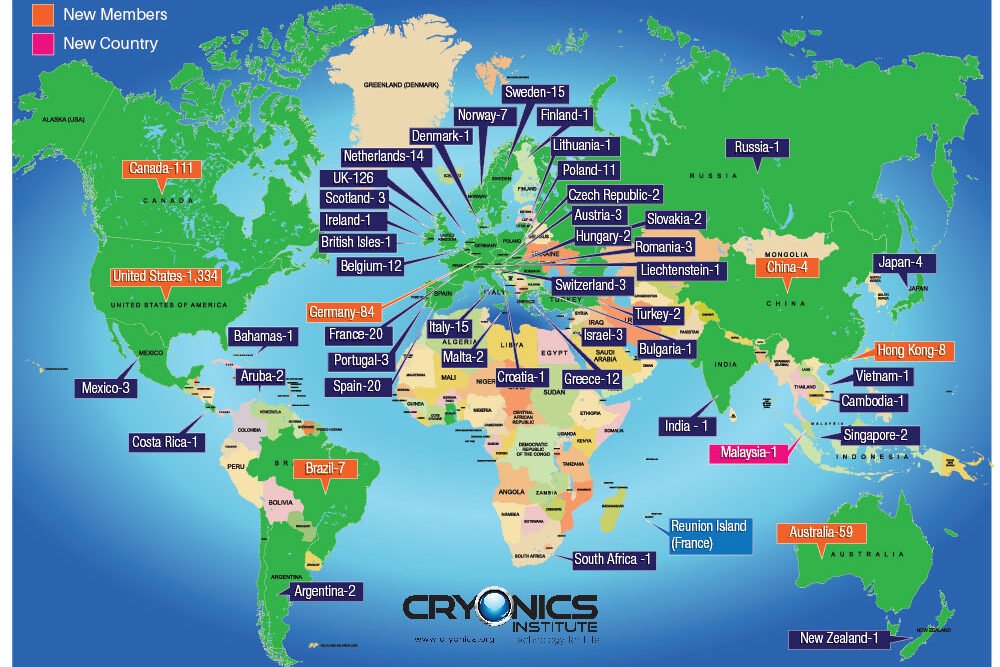What is Cryonics?

Cryonics is a speculative practice that aims to preserve human bodies or brains at extremely low temperatures with the hope of reviving and restoring them to life in the future. It is based on the belief that advancements in medical technology and scientific understanding will eventually make resuscitation and rejuvenation possible. While cryonics has garnered attention and debate, there are several key aspects to consider when exploring this topic in more detail.
- Preservation Process: Cryonic preservation involves a complex procedure known as vitrification. The process begins immediately after legal death is declared, typically by cooling the body or brain to very low temperatures using cryoprotectants. These cryoprotectants prevent ice crystal formation and aim to transform the tissues into a vitrified, glass-like state. By doing so, cellular damage is minimized, which increases the chances of successful future revival.

- Cryonics Organizations: Cryonic services are provided by organizations such as Alcor Life Extension Foundation, Cryonics Institute, and other independent companies. These organizations offer expertise and facilities for the cryonic preservation and long-term storage of patients. They have developed specific protocols and technologies to carry out the vitrification process and subsequent storage in cryogenic conditions.

- Legal and Ethical Considerations: Cryonics presents legal and ethical challenges. It is not widely regulated or recognized as a medical procedure in most jurisdictions. Laws regarding cryonics vary significantly, including issues related to property rights, consent, and the legal status of cryonics patients. There are debates surrounding the rights and responsibilities of the cryonics organizations, the patients, and their families.
- Future Revival: The ultimate goal of cryonics is the revival and restoration of cryonically preserved individuals. Proponents believe that future advancements in medical technology, such as nanotechnology, tissue regeneration, and advanced computational capabilities, may allow for repairing cellular damage, treating underlying diseases, and rejuvenating the preserved individuals. However, the specific means and timeline for achieving such revivals remain purely speculative.

- Technical and Logistical Challenges: Cryonics faces numerous technical challenges and uncertainties. The preservation process itself introduces potential risks, as the extreme temperatures and cryoprotectants may cause damage at the cellular and molecular levels. Critics argue that the cryopreservation process could lead to irreversible harm, making future revival unlikely. Additionally, questions persist regarding the practicality and feasibility of future revival, including issues such as memory restoration, identity preservation, and reintegration into society.
- Cost and Funding: Cryonic preservation is an expensive undertaking. The costs associated with cryonics include initial arrangements, preservation fees, and long-term storage costs. Prices can range from tens of thousands to hundreds of thousands of dollars, depending on the organization and the extent of preservation desired. Some individuals opt for life insurance policies or establish trust funds to cover these expenses.
- Limited Availability: Cryonics services are currently available to a relatively small number of individuals who have chosen this option. Facilities for cryonic preservation are primarily located in the United States, although a few organizations and independent cryonics providers exist in other countries as well. Accessibility and awareness of cryonics are limited, which influences the number of individuals who pursue this path.

It is important to note that the scientific and medical communities generally maintain a skeptical stance on cryonics. The feasibility and scientific plausibility of successful revival and restoration are widely debated. Critics argue that the current limitations in our understanding of preserving and reviving complex biological systems make the prospects of cryonics uncertain.
In conclusion, cryonics remains a highly controversial and speculative field. It raises profound questions about the nature of life, death, and the possibilities of future medical advancements. While some individuals see it as a potential pathway to extend life.











